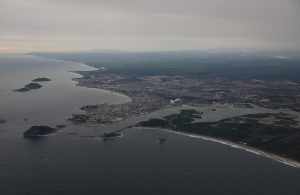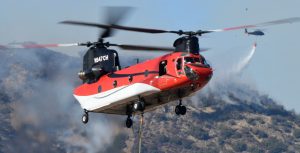
By David Alire Garcia
MAZATLAN, Mexico (Reuters) – Thousands of people were evacuated, buildings boarded up and classes canceled on Mexico’s Pacific coast as Hurricane Willa threatened to batter tourist resorts with high winds and heavy rains on Tuesday.
Residents on Monday night sealed off windows and doors with large wooden planks on hotels facing the historic downtown boardwalk of Mazatlan, a popular coastal city in the state of Sinaloa, as tourists strolled nearby and palm trees swayed in a light breeze.
Forecast to be one of the most powerful hurricanes to enter Mexico from the Pacific in recent years, Willa is expected to strike a few miles south of Mazatlan as soon as Tuesday afternoon.
At a gas station on the city’s outskirts, a steady line of cars queued up to refuel and shop at the neighboring convenience store.
Station attendant Zulema Pardo said residents had been streaming through for hours to stock up on basic items, buying enormous jugs of water and gasoline, and leaving the bread shelf completely empty.
“People are really scared,” she said. “People are crazy and worked up.”

A general view of Mazattlan is seen through a window of a plane as Hurricane Willa approaches the Pacific beach resort of Mazatlan, Mexico October 22, 2018. REUTERS/Henry Romero
Late on Monday the storm was advancing about 175 miles (280 km) south-southwest of Mazatlan, Mexico, according to the Miami-based National Hurricane Center (NHC).
Several other tourist getaways in Nayarit, as well as the beach resort of Puerto Vallarta in Jalisco state, also lie near the path of the storm, which is forecast to bring a “life-threatening storm surge, wind and rainfall,” the NHC said.
Willa, which was a Category 4 on the five-step Saffir-Simpson scale, was blowing maximum sustained winds of near 130 miles per hour (215 kph) on Monday night with higher gusts, the NHC said.
Headed northward, Willa is forecast to weaken after hitting the coast, the hurricane center said.
Antonio Echevarria, governor of Nayarit, said more than 10,000 people were being evacuated and schools would be closed. He warned locals not to defy the storm.
“Let’s not play the macho. Let’s not act like superheroes,” he said. “It’s a very strong hurricane, very potent, and we don’t want any tragedies.”
Sinaloa also canceled classes in much of the state.
Up to 18 inches (45 cm) of rainfall could pummel the storm zone, the NHC said. Even buildings up to 500 meters (1,640 feet) from the coastline could lose power and suffer physical damage, Mexico’s National Meteorological Service (SMN) said.
Despite the looming threat, some tourists appeared unfazed.
“It doesn’t ruin the pleasure of being here,” said vacationer Angel Avelar, popping open a beer while dangling his feet off the boardwalk.
“Maybe things will be different tomorrow.”
(Reporting by Dave Graham, David Alire Garcia and Brendan O’Brien; Writing by Daina Beth Solomon; Editing by Andrew Heavens and Raissa Kasolowsky)

